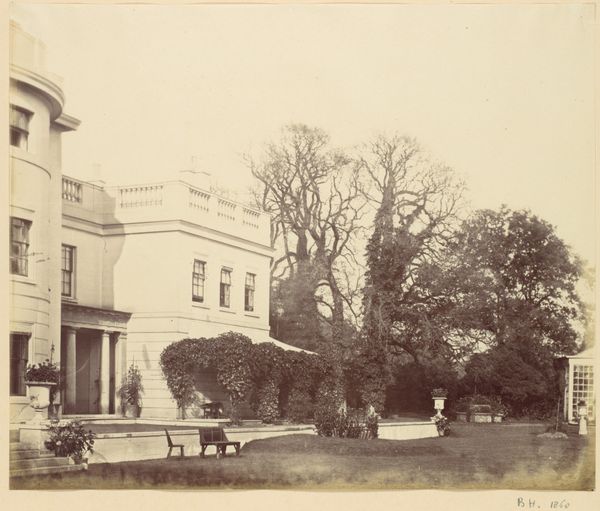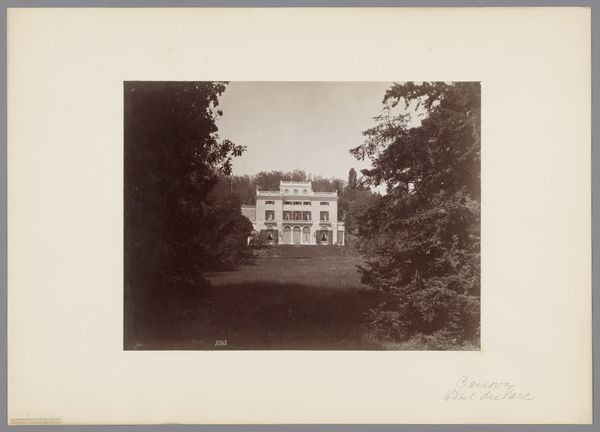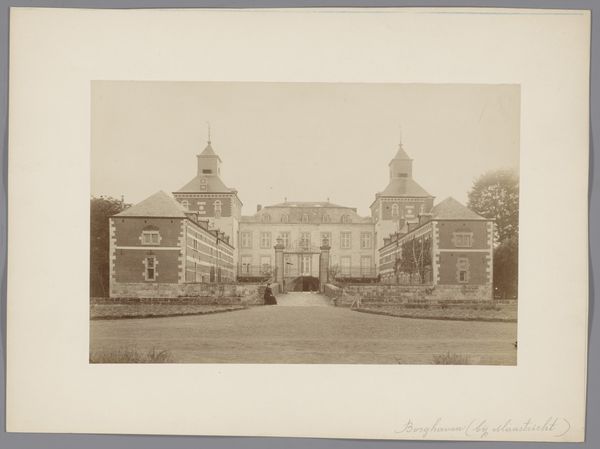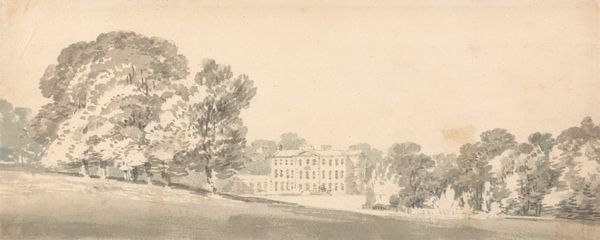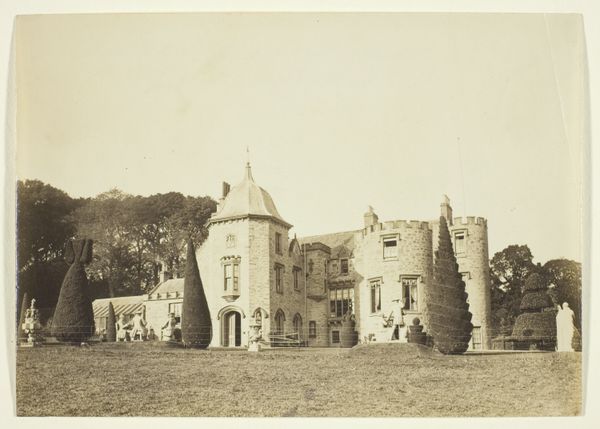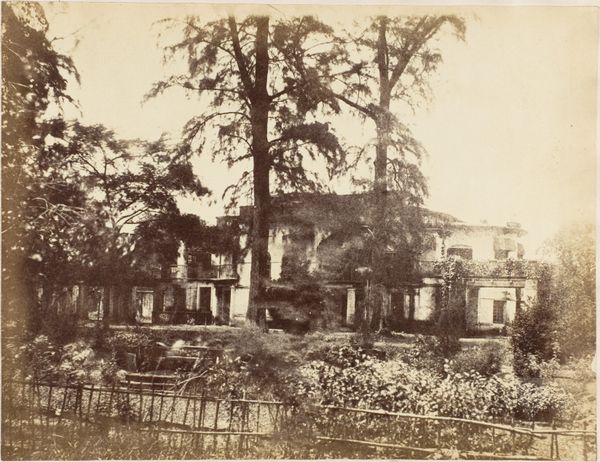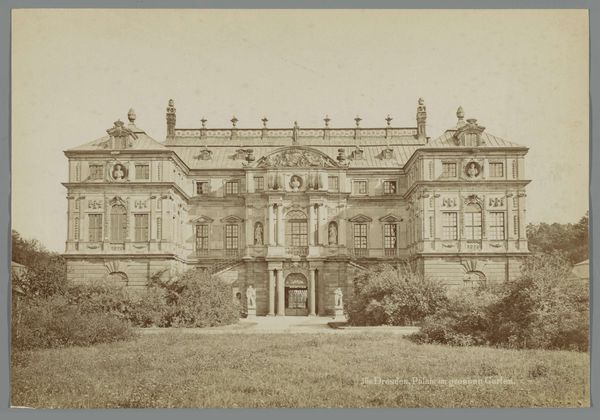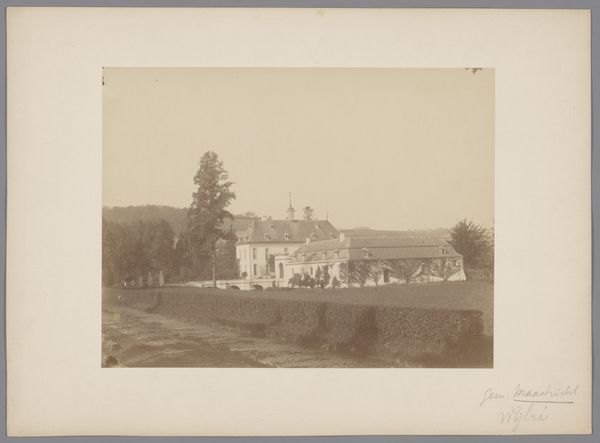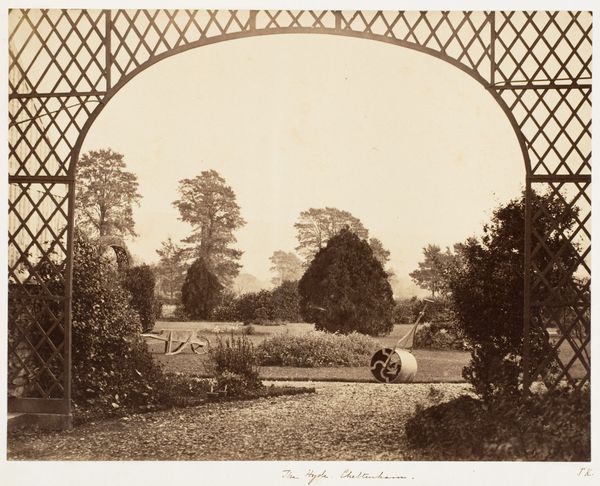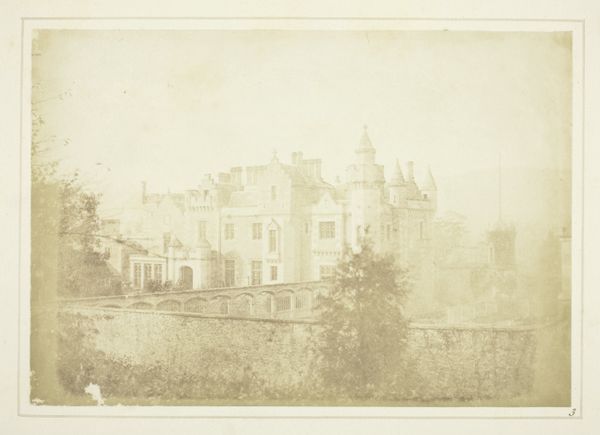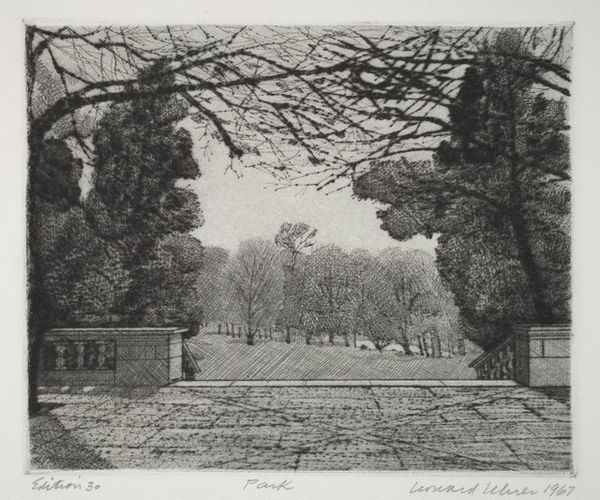
Dimensions: Image: 17 × 22.8 cm (6 11/16 in. × 9 in.)
Copyright: Public Domain
Curator: The play of light in this daguerreotype gives it such a distinct quality. James Knight created "Blenheim" between 1853 and 1856. Editor: There's a quiet grandeur to it, like looking into a half-remembered dream. The trees almost seem to be embracing the building. I wonder about the weight of the silvered copper plate Knight would have used? It's such an imposing image made using an early photographic technique. Curator: The symbolism of the house itself speaks of dynastic power and lineage, with classical motifs indicating aspirations toward empire. The landscaping is also worth noting, a carefully manicured slice of nature, an outward expression of social dominance. Editor: Yes, but what about the material reality? Blenheim Palace took over a decade to build and was a monumental construction project relying on specific laborers. Consider the embodied energy expended by craftsmen, bricklayers, stonemasons to erect something like this. It contrasts with photography as a mode of mechanical reproduction. Curator: And yet, the choice of vantage point adds a certain romantic element. Knight positions us not as masters surveying all we own, but rather peers peeking through foliage, creating a sense of longing and perhaps inaccessibility. The building's symbolism takes on a different character when it becomes an object of longing. Editor: I’m more interested in the daguerreotype as an industrial object. What photographic chemicals did Knight need and from what sources did he purchase those resources? Each of these items have embedded class values and histories worth noting to see the true scale of the production and process that constitutes "Blenheim." Curator: Still, the persistence of these classical motifs reminds me that empires come and go, but their symbolic residue often persists in art and architecture for centuries to come. Editor: Agreed, but only when preserved using these early modes of capturing images using silver. I guess for me, tracing the concrete origins of art reveals deeper truths about the societies that produce them. Curator: Perhaps a look at the relationship between human ingenuity, natural resource, and societal narrative ultimately provides the most enriching perspective of works like "Blenheim". Editor: It helps re-materialize the seemingly fixed symbols and values found in cultural icons!
Comments
No comments
Be the first to comment and join the conversation on the ultimate creative platform.
